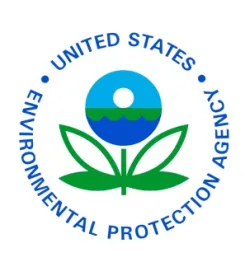On July 27, 2018, the U.S. Environmental Protection Agency (EPA) Office of Inspector General (OIG) issued a report entitled EPA’s Chemical Data Reporting Rule Largely Implemented as Intended, but Opportunities for Improvement Exist. OIG conducted an audit to determine how EPA is ensuring that companies are compliant with the Chemical Data Reporting (CDR) Rule requirements under the Toxic Substances Control Act (TSCA) and whether EPA is using CDR data to prioritize chemicals for the purpose of identifying their potential risks to human health and the environment. OIG found that implementing policies for data quality checks will help tailor the information reported by manufacturers and importers to meet EPA’s needs and improve its usefulness.
Background
Under the CDR Rule, EPA collects information about the types, quantities, and uses of chemical substances produced domestically and imported into the U.S. OIG states that EPA uses this information, which manufacturers and importers are required to submit every four years, to screen and prioritize chemicals for the purpose of identifying potential human health risks and environmental effects, per the methodology outlined in EPA’s TSCA Work Plan for Chemical Assessments (TSCA Work Plan).
In 2016, the Frank R. Lautenberg Chemical Safety for the 21st Century Act (Lautenberg Act) was enacted, amending TSCA. The Lautenberg Act requires EPA to identify high- and low-priority chemicals and to evaluate high-priority chemicals against a new risk-based safety standard. By December 2019, EPA must complete risk evaluations for the first ten high-priority chemicals, ramp up the risk evaluation process so that 20 high-priority chemicals are under evaluation at all times, and identify 20 low-priority chemicals that will not undergo further evaluation.
EPA’s chemical risk evaluation process for assessing the safety of existing chemicals consists of three states: prioritization; risk evaluation; and risk management. In 2016, EPA announced the first ten high-priority chemicals identified to undergo risk evaluation. OIG states that EPA continues to consider strategies for the future use of CDR data for pre-prioritization and risk assessment. On December 11, 2017, EPA held a public meeting to focus on possible approaches for identifying candidate chemicals to be prioritized for the risk assessment process under TSCA. EPA described and took comments regarding a number of possible approaches that could guide it in the identification process. More information on the December 11, 2017, meeting is available in our December 14, 2017, blog item, “EPA’s Approaches for Prioritization under TSCA Discussed at December 11, 2017, Public Meeting.”
What OIG Found
According to OIG, as required by TSCA, EPA is using CDR data to help assess the risks of chemicals in U.S. commerce. OIG states that it determined that EPA is implementing the risk evaluation process as outlined in its TSCA Work Plan to assess chemicals for human health and environmental risks.
In addition, EPA uses tools such as on-site inspections to monitor companies’ compliance with the CDR Rule, and EPA then takes enforcement action when violations are identified. OIG notes that while EPA conducts data quality checks of the chemical information submitted by companies, it lacks documented policies and procedures that specify how to select and conduct these data quality checks. According to OIG, policies and procedures would help EPA implement future data quality checks that meet its information needs, as well as help prevent the possible loss of institutional knowledge during periods of staff turnover or absence.
OIG also notes that the public stakeholders and EPA employees it interviewed cited issues regarding accessing and extracting CDR information from EPA’s CDR database. OIG states that its attempt at accessing information from EPA’s database also proved difficult. During the course of OIG’s audit, EPA took steps to help users more easily navigate the data by providing Microsoft Excel files and a data dictionary, however. These improvements are intended to enhance the public’s ability to obtain information about chemicals in U.S. commerce.
OIG Recommendation and Planned Corrective Action
OIG recommended that the Assistant Administrator for the Office of Chemical Safety and Pollution Prevention (OCSPP) develop and implement a policy and/or procedures for use by EPA staff in conducting data quality checks of CDR Rule data submitted by companies to EPA. According to OIG, OCSPP concurred with its recommendation and provided an acceptable corrective action with a milestone date of October 25, 2018. OIG states that the proposed corrective action, when completed, will meet the intent of its recommendation.
Commentary
The OIG report produced few surprises, as it is well known that the CDR data have been difficult for stakeholders to access and extract. We took note of the steps, as discussed in the OIG report, that EPA implemented to improve access and we are hopeful that these measures prove successful. The OIG recommendation that EPA develop and implement an internal policy and procedures for staff in conducting quality assurance and quality control checks of CDR data submissions is useful and should help to improve the quality and fidelity of the CDR data when used by EPA and stakeholders.


 />i
/>i


